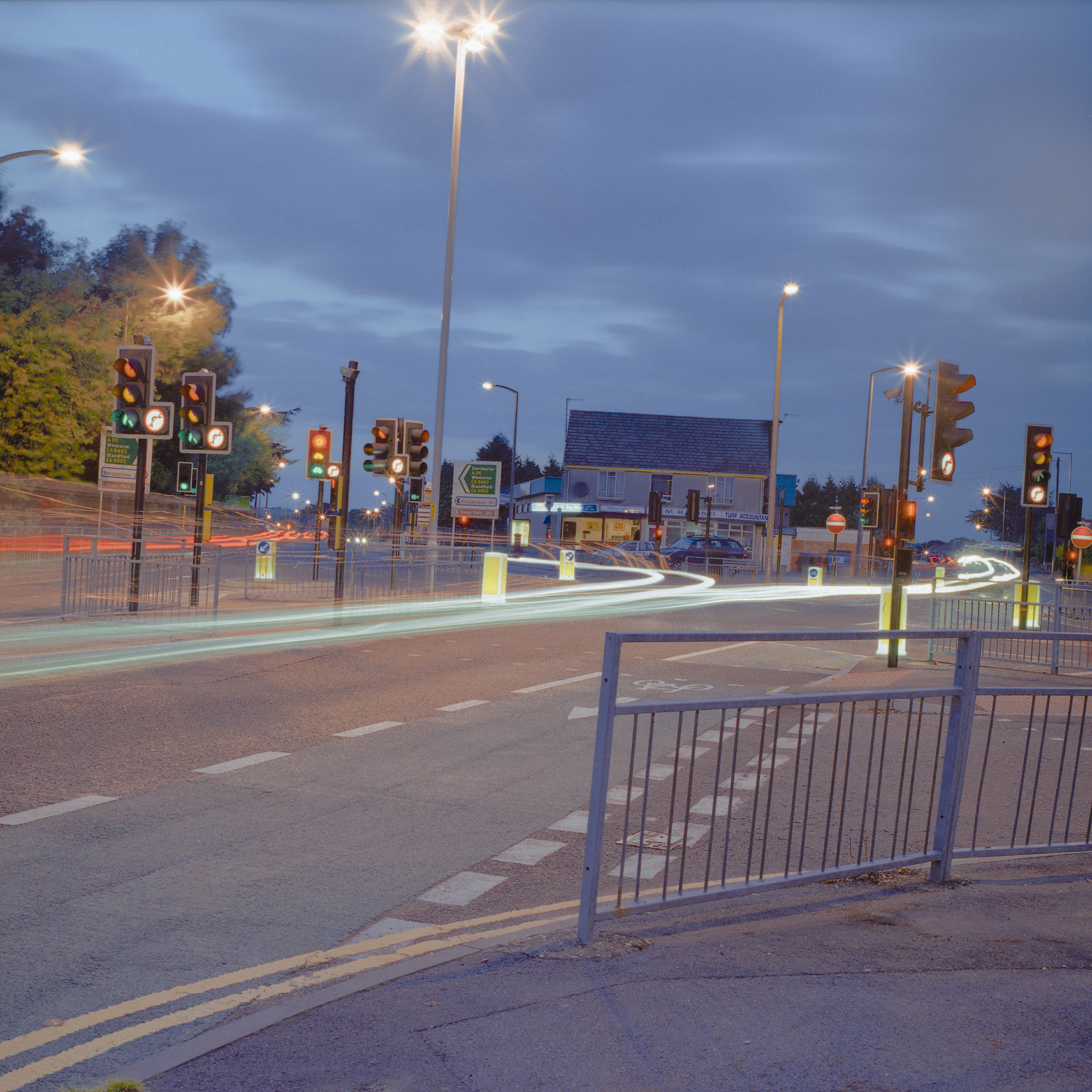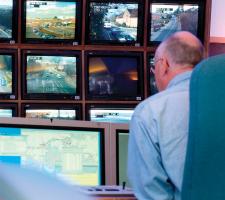
Siemens Mobility's Mark Bodger discusses the growing use of PC-based systems for urban traffic control
Across the ITS sector, there is a common trend of taking traffic and travel management out of the hands of bespoke solutions, realising the use of common, open-source technologies and solutions and enjoying all the attendant economies of scale and ease of use which that implies.
Urban Traffic Control (UTC) is no exception and the effects of the migration of UTC to PCs from specialist hardware have been twofold, according to Mark Bodger, Systems Marketing Manager,
"The pre-PC generation of systems was driven by high-end workstations. The backbone HP Alpha systems were in effect a large PC but they weren't mainstream technology. Now, though, it is possible to run an entire UTC system from a laptop. Our recent upgrade of the UTC system in Santiago, Chile to PC SCOOT, for instance, uses just eight PC servers to monitor traffic control equipment at over 2,500 intersections. Effectively, that's eight rack-mounted servers using mainstream technology which is available to everyone.
"Communications needs have also changed, particularly in the Urban Traffic Management and Control [
A further consideration, he adds, is that older-generation systems tend to be niche products: "Many local authorities and jurisdictions do not have the necessary support infrastructures in place - an important consideration once manufacturers decide to withdraw support for the older portions of their portfolios. PCs offer built-in redundancy; the advantage that back-up and maintenance software and support is all off-the-shelf."
The reducing size of the server systems has had little material effect on the size of potential applications. Bodger says that Siemens has been applying small systems ('small' being defined as something of the order of six to eight intersections) for quite some years now. He cites the installation in 1991/92 of a VAX-based solution to control just four intersections at a supermarket in Ipswich, England.
"Technology wasn't the limiting factor in the past, though cost might have been," he continues. "In actual fact, the costs of the older-generation and PC-based systems are roughly comparable as the central server is only one component of the overall UTC system; it is in the maintenance aspect where the real differences lie.
"In the wider sense, UTC is but one element of strategic transport management. The UTC system was often the only system that local authorities had. Cost was the driver. It meant that certain functions would be wrapped up in that one system.
"The advent of more powerful PCs, more capable Windows packages and UTMC has made it possible to be more flexible. Functions can be consolidated, or they can be distributed across several servers which no longer even need to be in the same building. UTC is still very good at what it does but the local elements of strategic management are probably best accomplished at a local level.
"That doesn't necessarily mean the demise of the traditional Traffic Management Centre [TMC] but it could well change its form. With a virtual environment now a possibility, and the ability for instance to remotely access CCTV feeds, we no longer necessarily need banks of control desks. Again, that's good for smaller local authorities as there's a much reduced infrastructure need. Larger authorities will probably still have larger, 'traditional' TMCs. It's a question of addressing differing needs."
Security concerns
The use of common, IP-based communications raises the issue of security. Globally, there have been several cases of hackers accessing and posting messages (of varying degrees of offensiveness) on local authorities' Variable Message Signs (VMS). This, says Bodger, reinforces the need for a layered approach to security, something for which the PC environment caters very well."We've seen cases in the UK where VMS have been tampered with. Access was gained not through the VMS system directly but through the local authority's network, to which the traffic control system was connected.
"Fundamentally, if you make it sufficiently difficult for people to commit nefarious acts they'll go do something elsewhere where it is easier. Some local authorities already use secure keys to allow remote access via VPNs. For instance, RAS [Remote Access Solution] 'key fobs' require the use of a continually changing code to access the server. A user has to offer up a user name and password, a current access code and then know his or her way around the system.
"In PC-based systems the PC is only a core server; for many years, access to a UTC system was via a PC using standard network technologies. Access is still achieved in broadly the same way however PC-based systems offer a greater range of off-the-shelf security solutions. Overall, I'd say that PCs are no less secure."
Distributed systems
There is a common trend in ITS of pushing intelligence to the edge of detection and monitoring networks. Camera systems featuring greater and greater processing capabilities are being fielded as a means of reducing the costs of moving ever-greater volumes of data around networks. Although this trend is not an exact fit with PC-based UTC - because systems such as SCOOT need to see the whole picture for decision-making purposes - the possibility of distributed architectures means that there is the potential to mirror the trend somewhat, shortening some links and, therefore, reducing communications costs.Natural progression
SCOOT - further developments
In the UK, UTMC is the chosen operating specification for non-strategic roads. As a whole, says Bodger, it makes integration easier allowing local roads to become a richer source of data and enabling network managers to build a much more complete picture of local conditions. At present in the UK, Siemens's SCOOT talks to the local area UTMC system and then DATEX II is used for communication between local authorities.
With moves to push DATEX II's influence down to the local road level, Bodger says that he can see a situation where SCOOT is adapted to communicate with both specifications.
"It's a process of evolution," he explains. "DATEX II is a very broad specification and not hugely detailed at the local level - as yet. UTMC has a more narrow focus but is very detailed. SCOOT, meanwhile, is a well-established solution and its systems are quite mature. Developments tend to be driven by local political and strategic requirements and we're now seeing a greater focus on the needs of all road users, not just motorists.
"I can certainly foresee greater integration for DATEX II at the UTMC level but there's nothing to say that UTMC can't provide feeds in its own right. If users were to go to a UTMC feed, it'd probably be richer than using just SCOOT."SCOOT was first applied on PCs in 2007 although there are other UTC systems, such as SCATS, which came onto the scene later and effectively grew up on PCs. First real-world implementations took place in the 2002/3 timeframe.
"In truth, a whole series of events have come together to drive things on. For instance, HP withdrawing mainline support for its Alpha systems and some local authorities and jurisdictions are saying that they will only accept PC-based solutions.
"That said, previous generations of PCs and Windows were probably not mature enough to fully support the move. The arrival of Windows XP and subsequent releases was a big factor." Potential market
There are two strands to the potential market for PC-based UTC. Although the trend has made UTC accessible to smaller and smaller local authorities, there is also a pressing need to refresh some of the older systems already out there.
Worldwide, says Bodger, this is a market worth several million dollars over the next decade: "Much of the Alpha hardware out there is obsolete - it's not supported or maintainable. Typically, you'd expect to see a new PC on your desk every three to four years, yet some of the systems being used for strategic road management - which are possibly much more important, given the safety-critical nature of what they do - are between eight and 10 years old."













